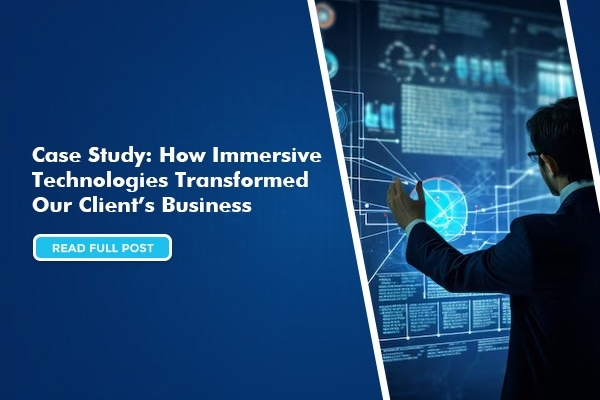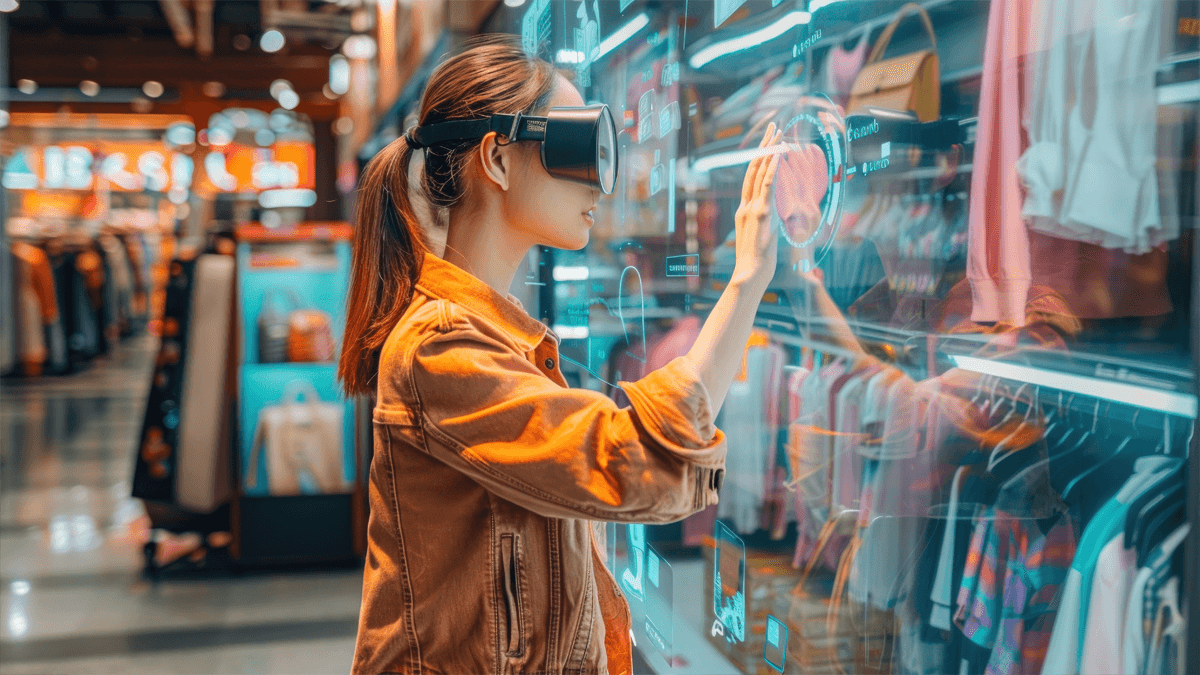In today’s rapidly evolving retail landscape, standing out from the competition requires more than just offering quality products or competitive prices. Retailers must now focus on delivering memorable, engaging customer experiences both in-store and online.
A mid-sized retail company, facing declining customer engagement and fierce competition, sought a solution to stand out in the crowded marketplace. The company wanted to enhance customer experience, create memorable interactions, and drive increased foot traffic to its physical stores while also boosting online engagement. To address these challenges, they turned to immersive technologies, leveraging cutting-edge tools like Virtual Reality (VR), Augmented Reality (AR), and Mixed Reality (MR) to redefine their business approach.
Challenges
Before adopting immersive technologies, the company encountered several roadblocks to growth:
- Lack of Customer Engagement: Traditional in-store experiences were no longer capturing customer interest. With e-commerce booming, foot traffic in physical stores has significantly dropped.
- Competitive Pressure: Competing with larger brands offering seamless, tech-enhanced experiences posed a constant challenge.
- Fragmented Omnichannel Strategy: The company had both online and offline channels, but they were poorly integrated, leading to inconsistent customer journeys.
- Limited Customer Insights: While the company collected customer data, it struggled to turn that information into actionable insights that could enhance the shopping experience.
Implementation of Immersive Technologies
To tackle these challenges head-on, the retail company includes the use of immersive technology. The implementation involved transforming their stores and digital platforms into engaging, interactive experiences using VR, AR, and MR.
Key Technologies Implemented:
- AR-Enhanced Product Displays: Augmented Reality was introduced to allow customers to scan products with their smartphones for detailed information, reviews, and virtual demonstrations. This created an interactive and informative shopping experience that elevated product discovery.
- VR Store Tours: The company introduced Virtual Reality experiences for online shoppers, offering virtual tours of their flagship stores. Customers could browse shelves, explore product categories, and interact with virtual assistants from the comfort of their homes.
- Mixed Reality Product Customization: Using Mixed Reality, the company enabled customers to design and visualize customized products in real-time, such as furniture or fashion items. This personalized approach made the shopping experience more engaging and immersive.
- AI-Driven Insights from AR Data: By collecting data from AR interactions, the company used AI to better understand customer preferences, optimize product displays, and personalize recommendations across all channels.
Results
The impact of immersive technologies was felt almost immediately. Within a few months, the retail company saw remarkable improvements in customer engagement, sales, and brand loyalty.
1. 40% Increase in In-Store Engagement
The AR-enhanced product displays transformed the way customers interacted with products. Customers spent more time exploring items, scanning for information, and sharing their experiences on social media, which significantly increased foot traffic to physical stores.
2. Significant Growth in Online Conversions
The Virtual Reality store tours bridged the gap between physical and online shopping. Customers who took VR tours were more likely to complete purchases, contributing to a substantial growth in e-commerce sales.
3. Enhanced Customer Personalization
The Mixed Reality product customization feature gave customers a sense of ownership over their purchases. This boosted customer satisfaction and loyalty, with repeat customers returning to experiment with new designs and ideas.
4. Significant Improvement in Brand Awareness
The innovative use of immersive technologies generated significant buzz on social media and in industry circles. The company was hailed as a pioneer in customer experience, giving them a competitive edge and increasing brand awareness.
5. Data-Driven Decision-Making
With the data collected through AR interactions, the company’s marketing and product teams could better tailor their campaigns and store layouts to meet customer demands. This resulted in optimized inventory management, better product placement, and improved marketing strategies.
Conclusion
The integration of immersive technologies transformed the retail company from a struggling player in a competitive market into a customer experience leader. By embracing immersive technology the company was able to not only enhance its in-store and online shopping experiences but also gain critical insights into customer behavior, all while fostering deeper connections with its audience.
For businesses looking to differentiate themselves in today’s fast-paced digital landscape, immersive technologies offer a compelling way to engage customers, personalize experiences, and ultimately drive growth. This retail company’s success is a testament to how businesses can leverage the latest technological advancements to stay ahead of the competition and meet evolving consumer expectations.




